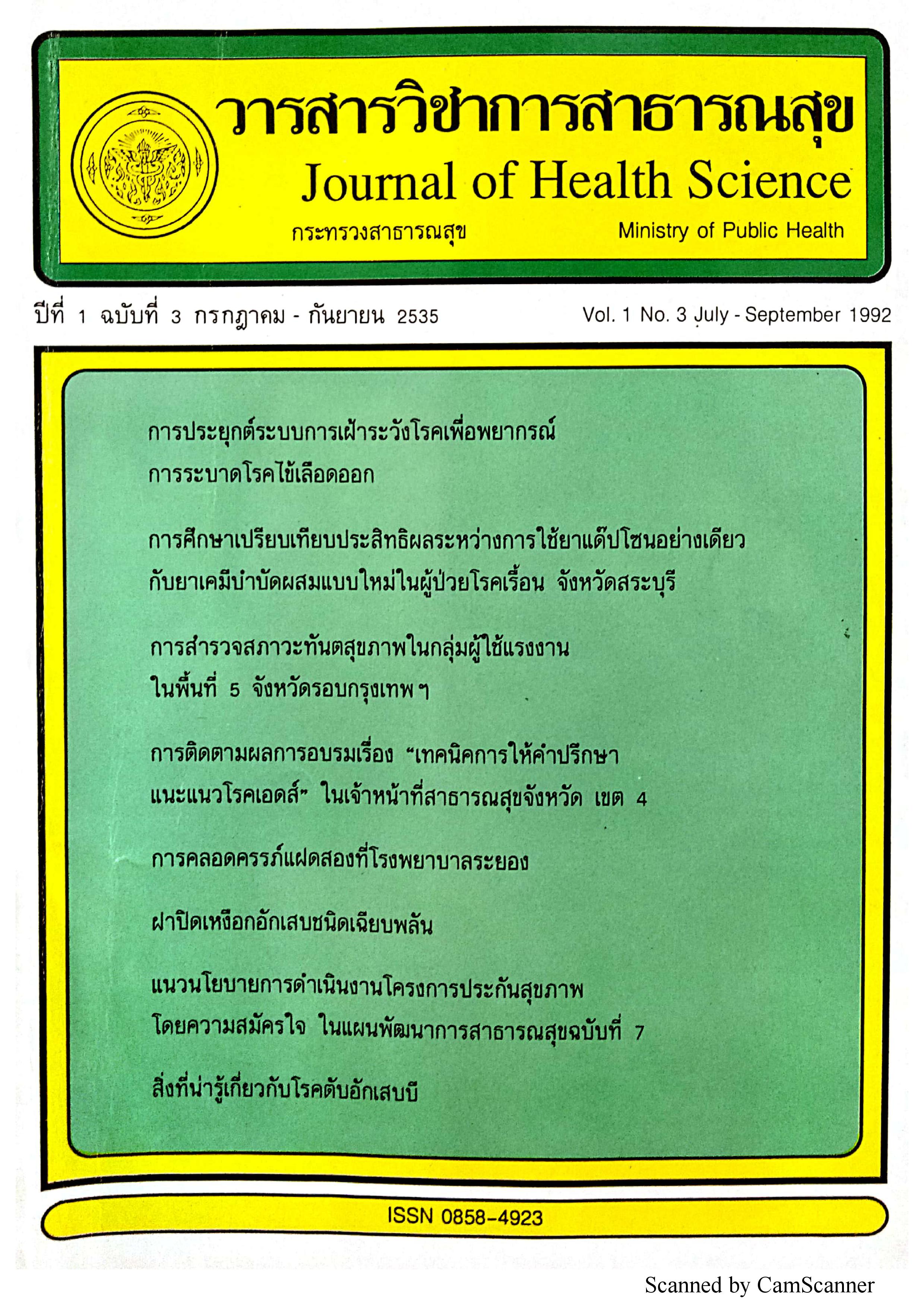Application of Epidemiological Surveillance for the Prediction of Dengue Hemorrhagic Fever Epidemic in Thailand
Abstract
The study of correlation between officially reported dengue hemorrhagic fever (DHF) cases during January to April and reported DHF cases throughout the year taking from Epidemiological Surveillance Report of the Division of Epidemiology, Ministry of public health during 1980 – 1991 , was found that the correlation coefficient was 0.910 with statistically significant and regression equation was Y = 16018.82 + 8.16 X, R squared was 0.828. The study of correlation between seropositive DHF cases during January to April and seropositive DHF cases throughout the year taking from the laboratory report of the Virus Research Institute, Department of Medical Sciences in 1981 and 1985 – 1991, was found that the correlation coefficient was 0.851 with statistically significant and regression equation was Y = 2059.80+1.26X equation was Y = 0.7249. The correlation between reported cases, seropositive cases during January to April and the reported cases throughout the year, was found multiple that correlation coefficient was 0.939 with statistically coefficient and regression equation was Y = 10646.11 – 34.41X1+11.35X2, R squared was 0.8835.
The result of this study can be used to forecast accurately to 82.88%, 72.48%, and 88.35% of patients throughout the year respectively by using the number of cases during January to April(dry season in Thailand). It helps us to predict tendency of the epidemics of the disease, it will be useful to apply the epidemiological surveillance for prompt and effective control DHF in the province of Thailand which pose public health problems.
Downloads
Downloads
Published
How to Cite
Issue
Section
License
Copyright (c) 1992 Ministry of Public Health

This work is licensed under a Creative Commons Attribution-NonCommercial-NoDerivatives 4.0 International License.







